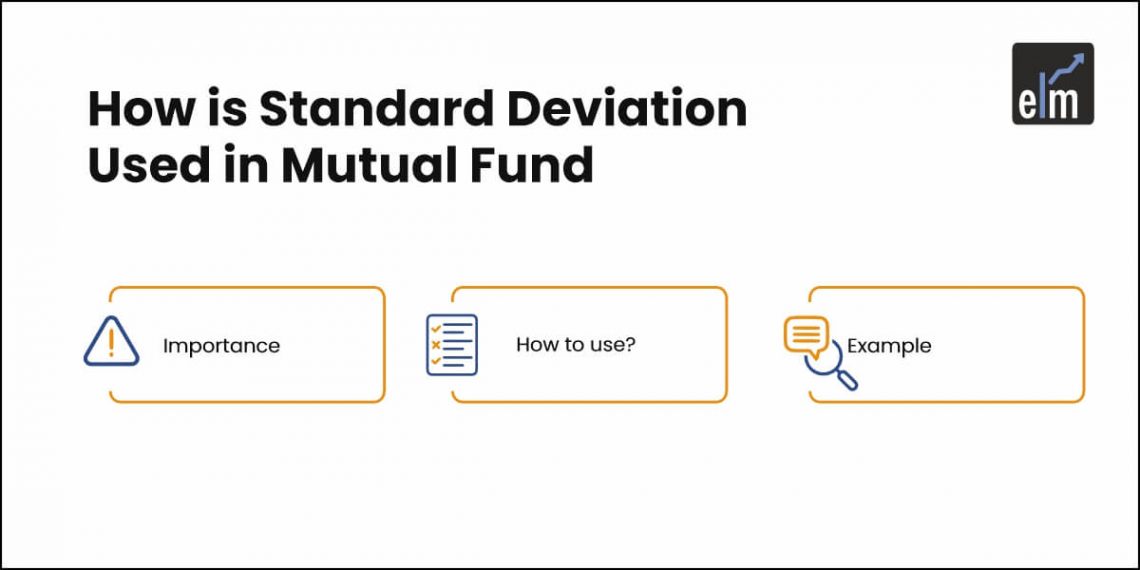When we talk about investing in mutual funds, most people look at returns. But understanding the risk behind those returns is just as important.
One popular way to measure risk in mutual funds is through something called “Standard Deviation.”
In this blog, we discuss what standard deviation is in mutual funds and how investors can use this measure to make wise investment decisions.
What is Standard Deviation in Mutual Funds?
Standard deviation is a number that tells you how much a mutual fund’s returns have moved up or down compared to its average return.
In simpler words, it tells you how “volatile” or “unstable” the fund’s performance has been in the past.
If the standard deviation is low, the fund’s returns have been stable and close to the average. If it’s high, the returns have fluctuated a lot. So, it helps investors understand how predictable a fund’s performance is.
Importance of Standard Deviation
- Risk Visibility: It gives a clear picture of how risky a mutual fund is.
- Decision-Making Tool: It helps you decide whether a fund suits your risk appetite.
- Return Expectations: High returns might come with high standard deviation, which means higher risk.
Risk Assessment
Mutual funds come with various levels of risk. A fund with a high standard deviation means its returns are more spread out, which indicates higher risk.
Conservative investors may want to avoid such funds, while aggressive investors might prefer them for their potential high returns.
Let’s say two funds offer the same average return of 10%. Fund A has a standard deviation of 3%, while Fund B has 8%. This means Fund B’s returns are less predictable and more volatile, while Fund A is relatively stable.
Mutual Fund Comparison
Standard deviation allows you to compare mutual funds more effectively.
If you’re looking at two funds with similar returns, then the one with the lower standard deviation is considered less risky.
This helps investors make better-informed choices.
Diversification of Portfolios
One of the main goals of diversification is to reduce the overall risk of your investment portfolio.
By selecting mutual funds with different standard deviations and investing in various asset classes (like equity, debt, and hybrid), you can balance the overall risk.
If one fund is volatile, then another stable fund can act as a hedging tool.
How to Use Standard Deviation in Mutual Funds?
- Match With Your Risk Profile: If you are risk-averse, then you should go for funds with a lower standard deviation.
- Compare Within the Same Category: One needs to compare standard deviation among similar types of funds (e.g., all large-cap equity funds).
- Don’t Ignore Other Metrics: Standard deviation is useful but should be considered along with the Sharpe Ratio, Alpha, Beta, and fund objectives.
- Look at Historical Trends: One should also analyse historical standard deviation to understand how consistently the fund has performed.
Example of Standard Deviation
Suppose you invest in two equity mutual funds:
- Fund X: Return = 12%, Standard Deviation = 4%
- Fund Y: return = 12%, Standard Deviation = 10%
From the above example, we can see that both funds have the same average return, but Fund Y is far more volatile.
This means that in some years, it could give 22%, and in others, it could give just 2% or even negative returns.
Whereas Fund X, is less risky and might range between 8% and 16% most years.
Conclusion
Standard deviation is a useful tool for mutual fund investors because it shows how much a fund’s returns can go up or down. In simple terms, it tells you how risky or stable a fund is. A high standard deviation means that the fund’s returns can vary a lot, whereas a low one means they are more steady. This helps investors choose funds that match their comfort with risk and long-term goals. However, it’s important to remember to make smart investment decisions, standard deviation should be used along with other tools and measures.
To know more, enroll in our mutual fund course now!






